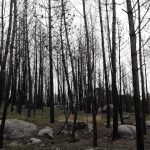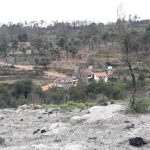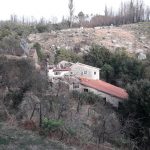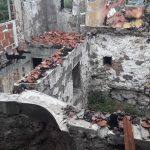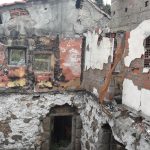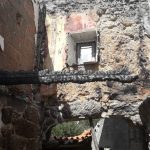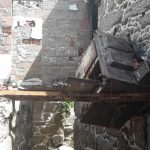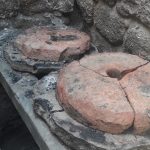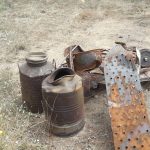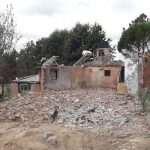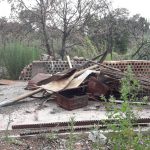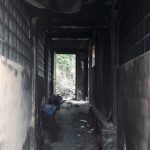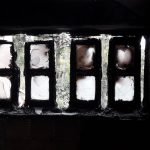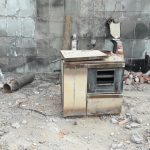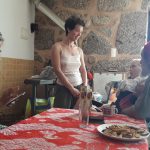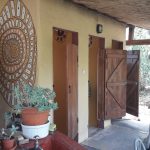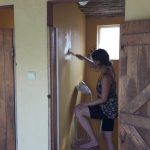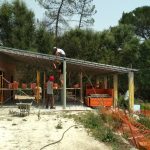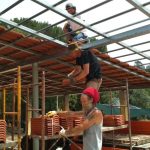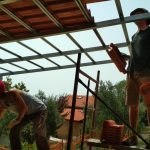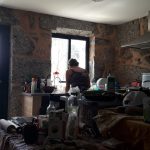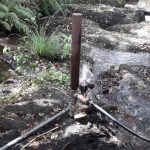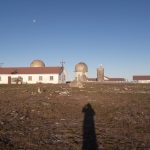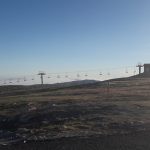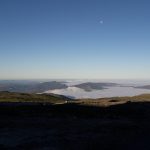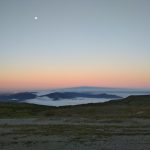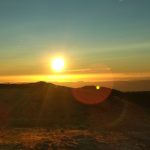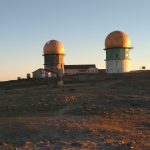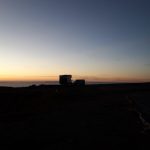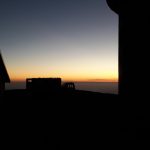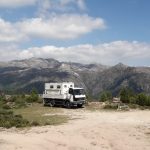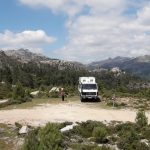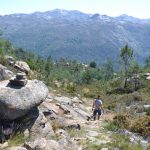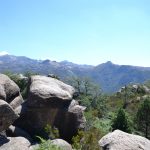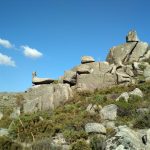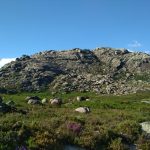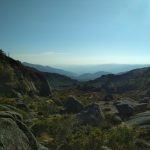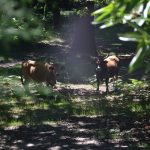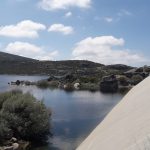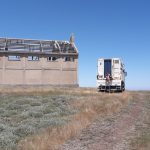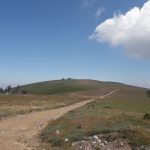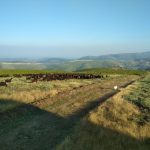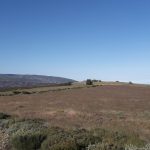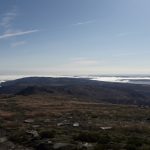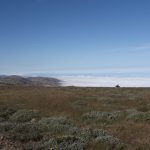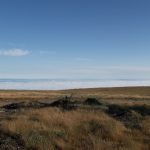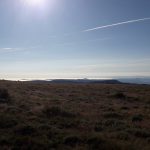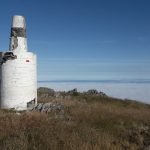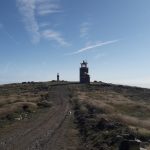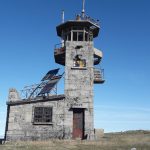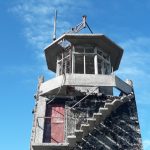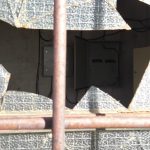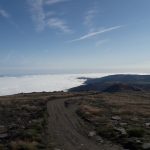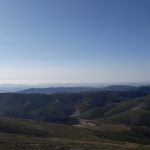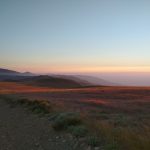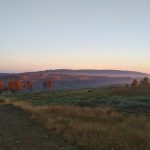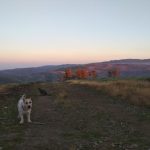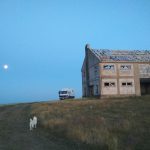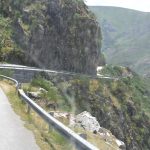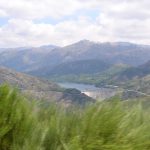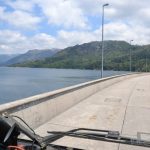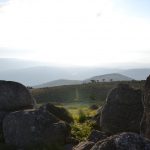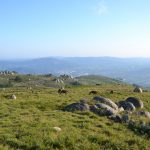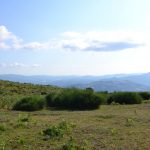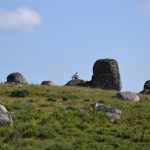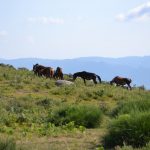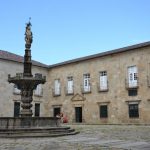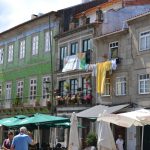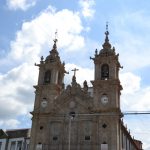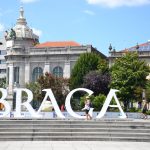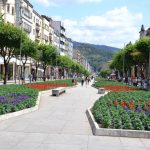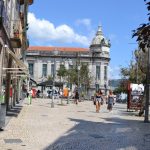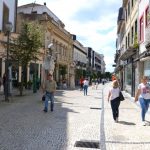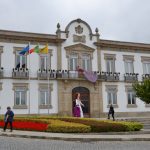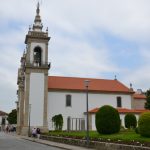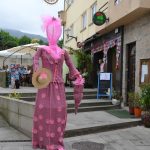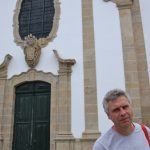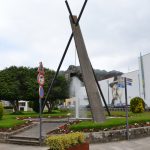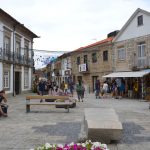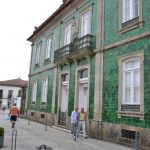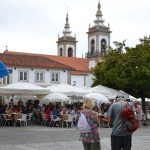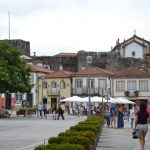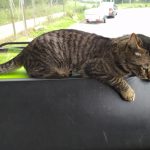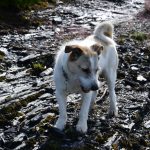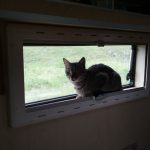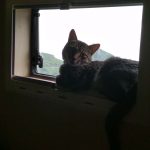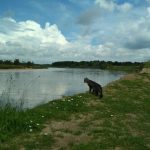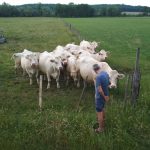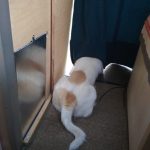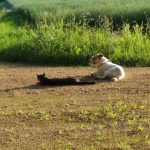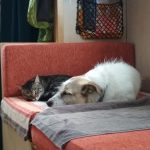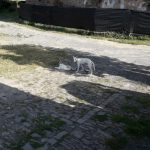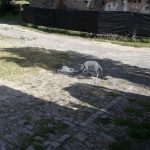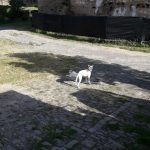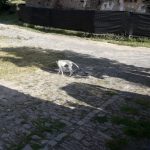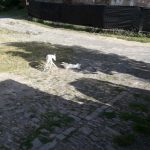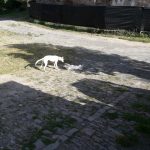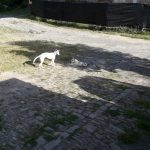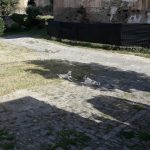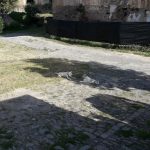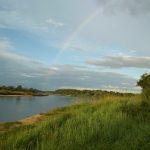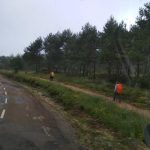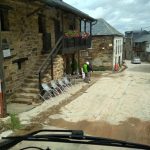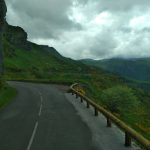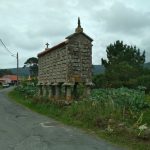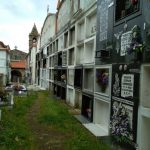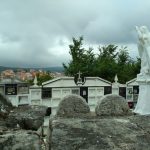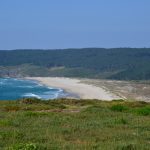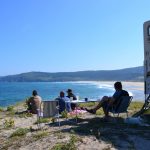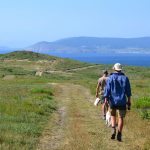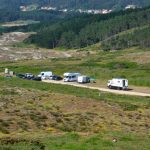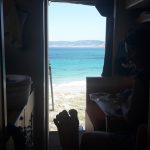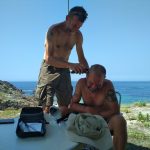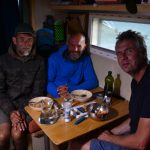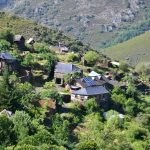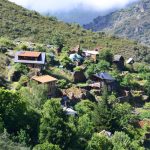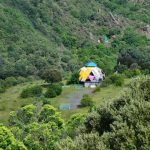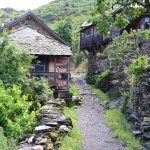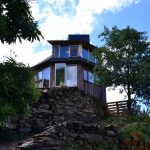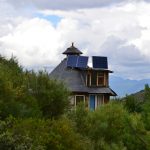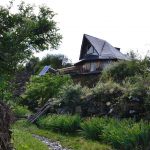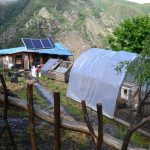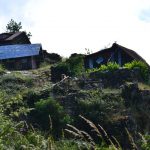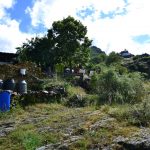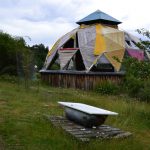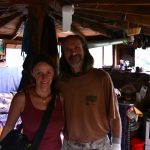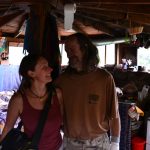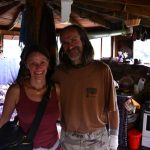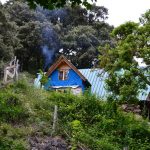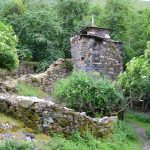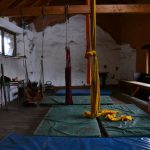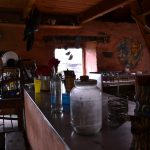We contacted an alternative British network in the region, where Steve and Caryn run their eco farm, and went to one of their parties in Benfeita, a little village next to the mountains of Serra da Estrela. It was nice to be among people and enjoy good music and talks. We realized that there are quite a lot of British in this region and they almost know all of each other. Since we have been in Portugal we are speaking much more English than Portuguese.
Good Luck

After working one month on the Quinta Cabeca do Mato we retired for two weeks to the ocean, until we will have our next appointment with another eco-community.
Actually I am fed up watching and posting sunsets, so please pretend not to have seen the picture above and watch this:

Well, I am tired of posting images of our truck and our pets as well. So, please forget that picture, too, and take a look at something much more serious:

Any suggestions how to set a German word with these letters?
Hydraulic Ram Pump
A Hydraulic Ram is a pump that converts kinetic energy into potential energy using the flow of a creek to lift the water higher than its original source. A waste water valve (the spraying thing in the video) frequently closes under the pressure of the flowing water coming through the inlet pipe (the metal tube in the video). This causes an overpressure in the pump, the so called water hammer effect. Under the overpressure a second valve, the so called check valve, opens and the water is pumped into the outlet pipe (the plastic tube). When the pressure decreases, the check valve closes, the waste water valve opens, the pressure of the flowing water can build up again and a new cycle begins. The metal cylinder is filled with air and works like a cushion to lower the stress of the water hammer effect on the parts of the pump.
This device does not need any external energy source. The result is a small but constantly flowing stream at the upper part of the outlet pipe.
Eco-Farm Quinta Cabeca do Mato

A week ago we arrived at the eco-farm Quinta Cabeca do Mato, which is run by an English couple that moved here 28 years ago. Most of it got burned in the wildfires of October 2017. For more details see their blog http://quintacabecadomato.blogspot.com/.
Sylvia and I are helping the family to rebuild the place. During the heat-wave last week with temperatures above 40 degrees, Sylvia repainted the public bathrooms and I repaired a hydraulic ram pump (details in the next article) and helped roofing a new house.
The last Night in cool and fresh Mountain Climate
At an altitude of 1993 metres Torre is the highest point of Portugal. It is a ski resort, a former military base and a nice and cool place to stay during hot summer times.
National Park Peneda-Gerês and Serra da Estrela
The north of Portugal has breathtakingly beautiful landscapes. So far, we have only been exploring the north, so actually we cannot tell, if the south is even more beautiful. We spent some days in the National Park of Peneda-Gerês, the protected landscape Corno do Bico and the mountain chain of Serra da Estrela.
National Park Peneda-Gerês
Peneda-Gerês is the only national park of Portugal. It is located in the north-east of the country. Our stay there with our truck was tolerated by the authorities.
Serra da Estrela
The Serra da Estrela is the highest mountain range of the Portuguese mainland. Its highest peak has an altitude of almost 2.000 metres. It is the only place in the country where the Portuguese go skiing in winter.
Protected landscape Corno do Bico and the areas between all these locations
We have not stayed actually in the protected landscape but very close to it, so that we were surrounded by the wild horses that live there.
Cities
Yes, there are also cities in North Portugal, but that is the field of expertise of Sylvia. I, for myself, am not the guy you want to do city trips with.
Portugal, finally

We finally crossed the border to Portugal. Our first appointment with an eco community will be in two weeks. So, there is enough time to explore the north of Portugal. But first a little review of our voyage so far.
Here a selection of pictures we made of our pets and animals we met:
And there was this rainbow in France:
Or this shopping centre in Andorra:
Pilgrims and roads in the mountains of Spain:
A corn bin and a cemetery in Spain:
The ocean in the north of Spain:
And a selfie of Sylvia:

There are people that say there is Andalusia and there is the rest of Spain. Well, I think the north of the country is highly underrated. The weather is not always sunny but the landscape and the little villages are extraordinary beautiful. What do you think?
A week off from travelling

We found a very nice place by the ocean and met the pilgrims Arno and Philippe, with whom we spent a whole week talking, celebrating and enjoying meals.
Matavenero – Eco Village in the Mountains of Spain

Matavenero and Poi Bueno are villages in the mountains in the north-west of Spain that were founded 1100 and 1400 AD. After burning down twice, they were abandoned in the late 60ies and occupied by German members of the Rainbow Family in the late 80ies. Since then, the population consisting of people from Germany, Spain, Poland and other countries grew up to over 100 inhabitants and decreased again in the first decade of the 21st century.
For us, the visit to Matavenero was our first serious step of our transition. We had visited an eco village in Brazil, but that was close to the capital and people who lived there were having jobs in the city. Matavenero is different. People came to this remote place to get away from civilization and to live a sustainable life.
Because one cannot go there by car, we parked our truck one kilometre away from the village and walked the small and steep path by foot. I must admit that we were a little bit nervous when we approached the village. We did not know what would happen. Would they welcome us or would we feel like intruders? Would we get any contact, at all?
At first sight, the anarchistic way the houses were built reminded me to Freetown Christiania, a former military area in the city of Copenhagen that was occupied by hippies and anarchists in the early 70ies.
When we entered the village, we could see that the majority of the houses were constructed on former stone foundations that survived the fires. To our surprise, we found the small alleyways and houses empty and almost deserted. Where was everybody?
Then we met Milos, a 50 years old Rastafari from Poland, and Christina, a Spanish woman, who was born 50 kilometres from the village. Both run a small shop and a bar. We were invited for a tea and received information about their lives in Matavenero. I liked Miros, because he was a funny guy.

They told us that subsistence is almost impossible because of the rocky area and the harsh climate. So, earning one’s life is a big issue for the people who live here. They said that this was the reason why so many inhabitants left the village 10 years ago. People were looking for a future for their children, jobs, schools and further educations. We got the strong impression that a community, which cannot provide their own existence, has difficulties to survive. Even hippies and anarchists have disputes with their neighbours, and when there is no common purpose, these communities can fall apart. A bit disillusioned but happy that we had made the move we left the village for the night.
The next day we came back and met Uli, a German hippie and one of the founders of the community of Matavenero. He earns his life as a musician playing on medieval markets. He invited us to his house and after learning from our plans he gave us addresses in Portugal, where we could find communities like the one he lived in. Uli also gave us the address of a Youtube-video about Matavenero: I know a place.
I was able to take a few nice pictures of him and Sylvia when we split:
After we left his house we headed for the other small village called Poi Bueno, which was a kilometre away downhill. But this place was even smaller and more deserted than Matavenero.
On the way back to our truck we finally entered the public house of the village, which we also found lacking people.
We are leaving Matavenero with mixed feelings. On the one hand, we are happy that we made contact, that we met a few nice people and that we learned a bit of the history of this community. On the other, this was some kind of reality check. Up to now, we only had fantasies and ideas about a life in an eco village. Now we have an impression of what lies ahead on our transition path.
Pajero vs. Montero
There is a story about a name of a Mitsubishi 4×4-model that did not comply to political correctness in all languages. During a midnight meal with the warden of the hostel we were staying close to two days ago I asked him if the story was true. He confirmed that “Pajero” in Spanish slang means “wanker”. So, I wondered, if this particular model is called Pajero in Spain as well. Yesterday I found out:

